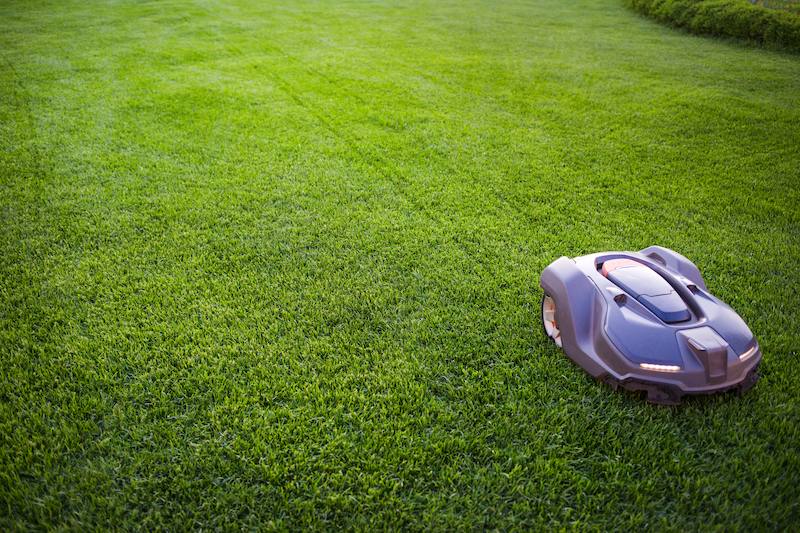Have you ever wondered what it takes to get a lush and healthy garden? Mowing the grass is an important part of keeping it looking neat and tidy. But cutting the grass in the right way can be a daunting task for some.
Having a beautiful, well-maintained lawn requires care and attention, just like any other aspect of gardening. Many people assume mowing the grass is enough, but there are several other essential steps that must be taken to achieve neatly cut grass.
If done incorrectly, mowing can actually cause major damage to your lawn.
Therefore, it’s important to understand the different steps involved in properly cutting your grass.
We will share with you all the essential steps that need to be taken when cutting the lawn.

Planning your grass cut
Maintaining an attractive lawn takes careful planning and hard work.
Before beginning work on your lawn, make sure to plan what you want the end product to look like.
Consider the different types of grass and other plants you want in your lawn, mow heights and patterns, and frequency of mowing.
Research the best methods for fertilizing, treating weeds and pests, and improving soil quality. By taking the time to plan ahead, you can enjoy a lush, green garden for years to come.
Gathering the proper equipment
Gathering the proper grass-cutting equipment is essential in order to ensure that you are able to effectively and efficiently maintain your lawn.
Whether it’s a manual push mower, a riding lawn mower, or even a robotic lawn mower, having the right equipment is key.
Not only will it help make the job easier, but having the right tools can also help you get the job done more quickly.
Investing in quality tools will last longer and get the job done better than cheap knock-offs.
Doing research on what to buy and how much to spend can be helpful in finding the best possible options for your situation.
Mower selection and maintenance
When selecting a mower, it is important to consider the size of your lawn and any potential weather conditions that may affect its use.
Once the right mower has been chosen for your lawn, proper maintenance is essential for an optimal experience.
The most common type of maintenance includes checking and replacing worn-out parts like blades, spark plugs, drive belts, etc., which are all valuable components in keeping your machine running smoothly.
Other types of upkeep include cleaning the deck under the mower regularly and making sure to keep fuel tanks full in order to limit future wear and tear on working parts.
These simple steps will help ensure the longevity of your mower so that you can get years of enjoyment out of it.

The importance of mowing high and often
Mowing high and often is an important part of a successful lawn maintenance plan. Keeping your lawn mowed regularly encourages healthy growth and helps to prevent weeds from taking over.
It reduces pests, increases the fertility of your soil, preserves moisture in the root system, and conserves water usage overall.
Also, by mowing your lawn high (generally around 3-4 inches) you are allowing for more shade coverage for your grass which is beneficial to have during hotter summer temperatures.
When to cut the grass, time of day and season
The best time to mow the lawn is typically in the early morning or late afternoon when temperatures are cooler.
This is also an ideal time for grass growth and helps maximize the overall health of your lawn.
Different types of grasses require different cutting seasons.
Ornamental and cool-season grasses should be cut during the spring season and warmer-season grasses should be cut during late summer.
Mowing at least once a week helps reduce pests and encourages lush, healthy growth.
How to mow the lawn & safety measures
Mowing the lawn is an important part of keeping a healthy, attractive lawn.
To ensure safety while cutting the lawn there are several factors to consider: always wear protective gear such as goggles and closed-toe shoes, and use a lawn mower with features specifically designed for safety, like automatic shutoff should you come into contact with an object.
Start from the edge of your lawn and mow in rows across outward so that you can avoid going over already mown grass.
Closely follow all operating instructions for the lawn mower and any attachments being used.
Always be aware of your surroundings and children or pets playing nearby.
Techniques for dealing with different grass types and troublesome areas
Having a well-maintained lawn requires particular techniques for different grass varieties and difficult mowing areas.
To properly address different types of grass and any challenging areas, it is helpful to know the various techniques available to make mowing easier.
This includes understanding your terrain, soil type, climate conditions, and type of grass.
Proper preparation prior to mowing is key to easy and effective lawn cutting.
Furthermore, using the right tools and accessories ensures optimal results when mowing certain types of grass or difficult terrain.
By becoming familiar with the techniques specific to each type of grass or challenging mowing area, you will be able to achieve a healthy lawn that looks great all summer long.
Aftercare & ongoing maintenance
Aftercare and ongoing lawn maintenance include a variety of activities that are essential to the health of a well-maintained lawn.
These activities may include trimming and edging grass, applying fertilizer, and treating weeds, as well as seasonally appropriate techniques such as aerating in the spring, overseeding in the fall, or even spot-treating certain spots if needed.
All these tasks require regular upkeep to ensure that the lawn remains healthy, lush, and beautiful year-round.
By having an educated professional grass cutting technician handle these tasks regularly you’ll be able to enjoy your beautiful lawn for years to come.



